Known for its beautiful scenery and rich architecture, Beijing – The capital of China has everything for tourists. On this guided day tour, we will take some of Beijing’s incredible sites while describing why they mean so much to the city’s history and stunning architecture. The incredibly crafted itinerary guarantees that you’ll view the finest of Beijing in one day. You will also taste real local dishes, discover lesser-known spots, and learn more about the culture and history that makes Beijing so exceptional. Now, let us head to the center of Beijing where the city’s astonishing history and charm come alive. From The Great Wall, a remnant of ancient China, to the Forbidden City, Beijing’s famous Imperial palace, this awe-striking city has it all.
What are the must-see attractions for a one-day tour in Beijing?
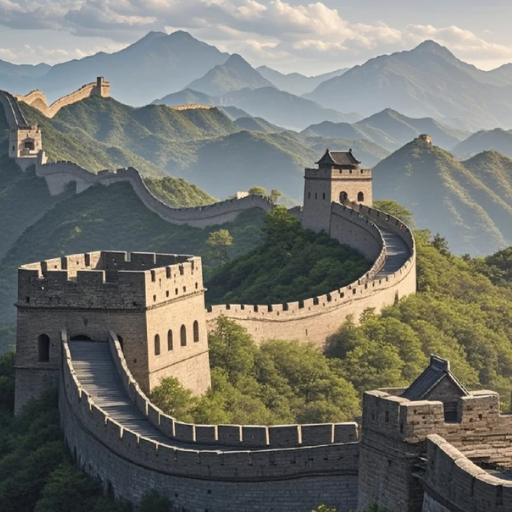
What are the must-see attractions for a one-day tour in Beijing
For anyone visiting Beijing, this majestic city offers a rich history that can be explored in a guided, single-day tour. Begin your exploration with a visit to Tiananmen Square, the heart of China. From here, you can conveniently go to the Forbidden City, a palace complex that is world-renowned for its imperial history. Then it is recommended to head towards Jingshan Park where climbing a small hill provides breathtaking views of the city. If you are hungry, I recommend authentic Peking duck served at traditional restaurants for lunch. Later in the afternoon, swing by the Temple of Heaven, a stunning piece of Ming-era world architecture. This break from a guided tour can be finished with a visit to Wangfujing Street where the lively atmosphere of shopping and street food further enriches the experience. This peculiarly crafted sequence of events will help visitors admire the culture, life, and history of Beijing altogether.
Visiting the renowned Great Wall of China
The Great Wall of China is one of the most well-known structures in the world and certainly put the skills of early-age engineering on display. I was able to visit during the offseason, which allowed me to start my visit to the Mutianyu section. This portion of the wall is stunning and is much less crowded than the Badaling region. This wall has pretty strenuous hiking trails, but reaching the top allowed me to see the magnificent views of rolling hills and dense greenery. The slopes are breathtaking to look at but are even better to hike. To make the experience more exhilarating, I decided to use the cable lift and then used a toboggan to ride back down the wall. The historic view combined with the exhilarating ride made this an unforgettable experience.
Unveiling the Mysteries of the Forbidden City
Covering a total area of around 180 acres, the Forbidden City is located in the heart of Beijing. This large palace complex served as the imperial residence for Chinese emperors for almost 500 years. In the 15th century during the Ming Dynasty, the palace was built, and its architecture truly represents the culture of China, because it displays traditional principles of symmetry, hierarchy, and harmony. It comprises 980 remaining buildings and over 8700 rooms. The intricate and vivid designs of the buildings reflect the artistic excellence of Chinese craftsmen which can be seen through their golden roofs, richly decorated beams, and expansive courtyards.
Meridian Gate, the main entrance, and the Golden Water Bridges leading into the palace are the most admired parts for the tourists visiting. At the center of the city is the Hall of Supreme Harmony, where grand imperial events and coronation ceremonies are held. The advanced construction and drainage systems enabled the long-term preservation of this site. In modern days, technology is used including 3D mapping and heritage conservation software, these tools help with preserving the complex and provide a better understanding of it. Visiting China’s imperial history not only provides deeper insight into the matter but reflects the exquisite technical ability and cultural worth of the admired world heritage site.
Witnessing the grandeur of Tiananmen Square
Introducing Tiananmen Square is a mesmerizing blend of history, culture, and magnitude which was once a fascinating experience to me. Witnessing this vast open space comes with China’s most important events, making it the heart of modern China. Monuments to the People’s Heroes, The Great Hall of the People, and the National Museum of China’s iconic landmarks fuel China’s rich and blended complex history. The visit was truly remarkable as it was overwhelming due to the size and importance of the square, making it unforgettable.
How to plan the perfect Beijing day trip itinerary?
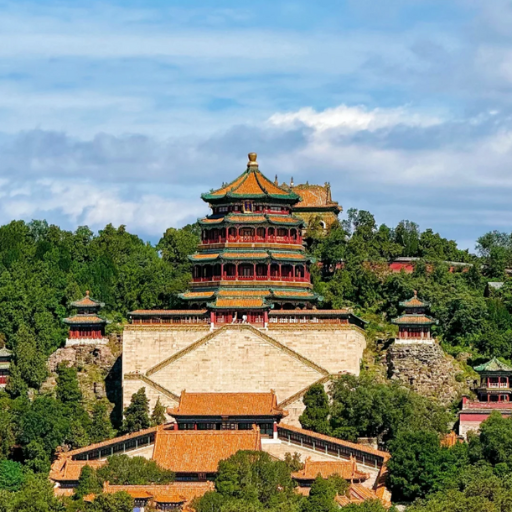
How to plan the perfect Beijing day trip itinerary
To capture the radiant features of Beijing, it is important to organize a day trip efficiently which is planning a day trip to Beijing. Start your day by arriving early at Tiananmen Square as it has great historical importance along with magnificent landmarks. From there, walk or head directly to the Forbidden City while setting aside a couple of hours to appreciate its splendid construction and imperial history. For lunch, grab a meal from local restaurants that are close by and provide Delhi cuisine. After lunch, visit the Temple of Heaven and extract the calmness of its surroundings along with the cultural significance of the Temple itself. Finish your day with a walk around the perimeter of Summer Palace as the sun goes down soaking into the surrounding nature along with delightful views of Kunming Lake. By following a set schedule and focusing on these main highlighted places, transforming your day trip to Beijing into a breathtaking experience is possible.
Balancing time between major attractions
Managing time with major tourist attractions in Beijing calls for meticulous planning and prioritization. In this regard, I suggest that one wakes up early in the morning to avoid the overwhelming crowds at the Great Wall since they start pouring in during mid-morning. I suggest spending 2-3 hours there so that you can explore the Great Wall thoroughly and have enough time to make it back to the city for lunch. After lunch, you could spend the rest of the afternoon at the Temple of Heaven or the Forbidden City, attempting to spend 2 hours at each site. Lastly, it is advisable to reserve the early evening for the Summer Palace where one can rest after a long active day while basking in the scenic charm of Kunming Lake. This way, the day is thoroughly enjoyed without feeling rushed.
Incorporating authentic local experiences
Engaging in hands-on activities that connect you with the place is highly suggested for cultivating genuine appreciation towards the culture. For example, you may partake in a dumpling-making class in Beijing and enjoy regional cuisine. Such sessions take about 2 hours. Alternatively, you can visit the Panjiayuan Antique Market, a local treasure, to view and purchase beautiful crafts and antiques. A duration of 1-1.5 hours is recommended to fully engage in the local marketplace without constraint. Moreover, watching a Peking opera in the evening provides incredible insight into the visual arts in China. Typical performances run anywhere from 1.5 – 2 hours. You can be sure that these activities will create unforgettable moments for you during your visit.
Tips for efficient transportation in Beijing
In my opinion, the best way of moving around Beijing easily is through the use of the subway. Broadly speaking, it is cheap, well-connected, and takes away the hassle of traffic jams. For additional ease, download a metro map app or google a current guide. Alternatively, biking is another option for covering short distances—shared bicycles are easy to find and easy to operate. If you find that you must use taxis or ride-hailing services such as DiDi, be sure to have your destination written down in Chinese, as a large portion of the drivers do not speak English. Last but not least, always travel with an accessible transportation card (Beijing Yikatong) for buses and subways. This makes getting around the city much less stressful.
How to experience Beijing’s culture beyond the main attractions?
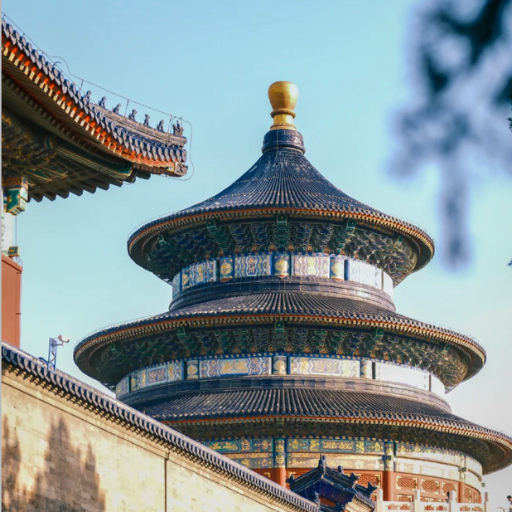
How to experience Beijing’s culture beyond the main attractions
To go beyond the major sites and truly appreciate Beijing’s culture, its old hutongs and narrow alleyways must be visited. These lesser-known parts of the city tell a story of their own through their beautiful courtyards, quaint cafes, local shops, and the everyday life of the locals. Interact with the people at the local markets, especially antiques and crafts sellers at Panjiayuan Antique Market, and you will surely uncover some interesting pieces. Authentic restaurants also serve authentic family-style Beijing food. You will discover traditional tastes in dishes like jibing, and many more. A great finish would be some tai chi, tea ceremony, calligraphy, and even a stroll in the park to soak in the magnificent heritage of Beijing.
Roaming the Hutongs of Old Beijing
One of the most fascinating things to do in Beijing is to stroll along the narrow streets called hutongs. An observer of Old Beijing will marvel at the sight of its heart. These alleyways are surrounded by classic courtyard houses that reflect a long-gone period’s architectural splendor. Hutongs like Nanluoguxiang and Yandai Xie Jie are known to have preserved their history while always being vibrant with modernity with their lovely cafes, little shops, and secret courtyards waiting to be explored. I certainly enjoyed meeting the locals, which offered me insight into their customs, traditions, and day-to-day life. For those looking for a more engaging experience, riding the rickshaws and going up the Drum and Bell Towers offer excellent panoramas of the surrounding hutongs. The trip not only provides the majestic sights but also an insight into the true icon of culture, which is Beijing.
Visiting the serene Temple of Heaven
The Temple of Heaven, an exquisite religious site in Beijing, is an example of Chinese architecture and their religion. Constructed in the Ming Dynasty, this UNESCO Heritage site served as the ideal location for emperors to conduct ritualistic ceremonies to foster good harvests. The temple’s layout is circular reflecting heaven with square bases symbolizing earth. Prominent landmarks are the Echo Wall with its amazing acoustics and the Hall of Prayer for Good Harvests, which is made entirely out of wooden parts and without a single nail. To enjoy the surrounding park where locals practice tai chi, it is best to plan your visit during the early mornings. There are not many people at this hour and the peaceful atmosphere can fully be appreciated.
Attending a traditional dumpling-making class
Guided by expert instructors, I acquired new skills which included making wrappers for the dumplings, and tasty fillings out of fresh local ingredients. The skilled instructors taught me how to fold the dumplings into complex shapes, allowing me to admire the culture and various cooking styles. During warm conversations, I was able to impressively cherish this dish that was accompanied by delicious flavors, making me appreciate it even more.
What are the best options for visiting the Great Wall on a day tour?
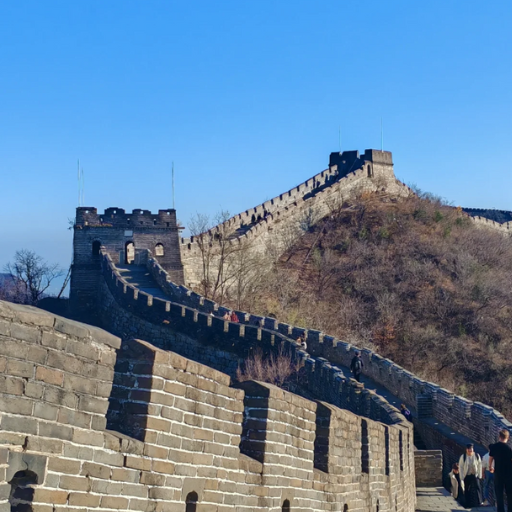
What are the best options for visiting the Great Wall on a day tour
If you want to make the best out of your time while visiting the Great Wall, a day tour can offer a variety of service options. One classic, convenient, and popular choice for visitors is the Badaling section due to its maintained wall portions and exquisite views. For those who appreciate a more unspoiled and authentic experience, the Mutianyu section offers idealization complimented by its rich nature, as well as a less crowded public experience, which makes it ideal. Adventurous travelers with more experience who wish to avoid the heavy tourist atmosphere will most likely find the sense of history captured in the wild, unrestored charm of the Jiankou section to be appealing. These sections are all offered by many private operators, who also provide guided tours and transportation which makes the day trip easy and informative.
Comparing the Mutianyu and Badaling sections
Both Mutianyu and Badaling Great Wall sections have their special features that draw satisfied customers. Restored intricate architecture, thick green foliage, and enhanced access points, such as a cable car and toboggan ride, make the Mutianyu section stand out for those looking for less crowded, more scenic experiences. This part of the wall offers peace and natural charm so it is popular among families, as well as other travelers who prefer unhurried vacations.
The Badaling section, on the other hand, is the most popular and best-kept portion of the wall because it is very accessible by public transport with a direct train service to it. While being of considerable historical significance, it offers great panoramic sights of the region; however, it gets very overcrowded during the holiday season. Moreover, because of Badaling’s proximity to Beijing, it is also a hotspot for first-time tourists who want to take in the essence of the Great Wall without too much hassle. Both sections are endowed with extraordinary historical value, but vastly different in the types of experiences they offer travelers – whether a calm environment or a more vibrant atmosphere filled with people.
Tips for avoiding crowds at the Great Wall
- Visit early or late in the day – Arriving earlier than the opening or closer to closing time dramatically decreases the estimated number of people. The lighting during these times also improves the experience and photos taken.
- Choose less popular sections – Passageways like Simatai or Jiankou are not as heavily trafficked as Badaling or Mutianyu which makes them more tranquil. While they could take more effort to reach, the calmness makes it worth it.
- Avoid peak travel times – Weeks without Chinese public holidays, weekends, and peak travel season is a good time to plan your holiday. Midweek vacations are likely to be less crowded with tourists.
- Book tickets in advance – Ordering tickets on the Internet is a great time saver as well as easing the entry experience as long lines at the entrance won’t be a problem.
- Consider a guided tour – Some guided tours cater to smaller groups and provide unusual routes that are away from the most crowded places.
These approaches made my visit much more enjoyable and memorable!
Combining the Great Wall visit with other nearby attractions
It is beneficial and convenient to combine excursions to the Great Wall with other nearby destinations. On my visit to the Wall, I accompanied it with a trip to the Ming Tombs which are historic sites featuring imperial mausoleums. This greatly added to my understanding of China’s rich history. Another wonderful place close to the Summer Palace, which has magnificent architecture alongside beautiful gardens. For those who love nature, the Mutianyu part of the Wall can be followed by a tranquil retreat to the picturesque Huairou Reservoir. These combinations greatly assisted me in utilizing the full value of my day by focusing on history, culture, and nature all in one go.
How to make the most of your time at the Forbidden City?
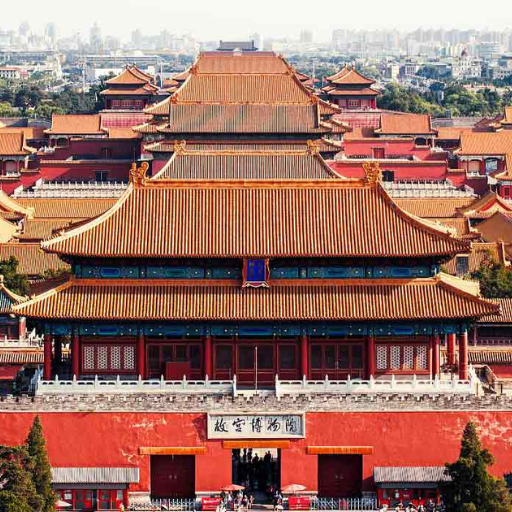
How to make the most of your time at the Forbidden City
To maximize your visit to the Forbidden City, you should purchase tickets in advance to avoid long lines. Try to arrive a bit early to absorb the sprawling architecture without being rushed. Pay attention to the Meridian Gate, the Hall of Supreme Harmony, and the Palace of Heavenly Purity. To get the most out of the visit, use an audio guide or knowledgeable tour guide who can relay the fascinating history of this culturally significant site. Make sure to wear comfortable shoes, as well as allocate at least half a day to this UNESCO World Heritage Site.
Understanding the layout and key areas to visit
The Forbidden City is famous for its dual use as both a ceremonial and residential structure which is why it is famously noted that it is laid out in a rectangular shape with an outer and inner court. The Southern Outer Court holds pinnacle structures such as the Hall of Supreme Harmony and was historically reserved for ceremonial events. The northern Inner Court housed the emperor and his family’s residential quarters, which had notable portions like the Palace of Heavenly Purity. One of the major architectural features is a prominent axis that goes through the center of the entire set of buildings and leads to the most important ones. Systematic exploration of these areas will profoundly enhance appreciation of the intricately designed historical site.
Learning about the Ming and Qing Dynasties
History of China saw the Ming Dynasty (1368 -1644) and Qing Dynasties (1644 -1912) as the most productive periods politically, economically and socially. Artwork, literature, and architecture were highly developed, as the Chinese initiated and completed the Great Wall of China and the Forbidden City during the rule of the Ming, known to be the Han Dynasty. Expansion of China’s borders into Tibet, Xinjiang, and Mongolia was exercised during the Qing Dynasty by the Manchu leading China towards achieving its Greatest Size. The Equalization of Tax revenue and expenditures, Reinforcement of Imperial Administration through a centralized system, and rigorous civil service exams aided both Dynasties in Imperial Rule. In later years, the Eastern part of the Qing Empire witnessed civil disturbance and foreign attack from the Opium Wars which assisted Westerners in Imperial Colonization and Rise to Power causing the Assimilation of China into a Republic of China. These periods gave immense value in history and culture for modern times.
Insider tips for beating the crowds
In my experience, the assertion that “timing is everything” is highly accurate. I suggest that travelers try to arrive at most attractions before they open or in the late afternoon after most people have left. Weekdays tend to be better than weekends, and traveling during the off-season can make a significant difference. For those who plan on going to a museum or a landmark, it is often the case that buying tickets in advance online will allow one to bypass the queue. When navigating busy cities, try to plan your day so that you start with the less popular attractions and save the more popular ones for when they are the least busy. Most importantly, do not be afraid to take the road less traveled—many places that are not as well known provide just as wonderful an experience without the crowds.
References
Frequently Asked Questions (FAQ)
Q: What are the must-see attractions on a Beijing day tour?
A: A comprehensive Beijing day tour typically includes visits to the Mutianyu Great Wall, Forbidden City, Tiananmen Square, and the Summer Palace. These attractions offer a perfect blend of history, culture, and architectural marvels, making for an unforgettable day in Beijing.
Q: How long does it take to visit the Great Wall on a day tour from Beijing?
A: Visiting the Great Wall, particularly the Mutianyu section, usually takes about 2-3 hours. This allows time for hiking, taking photos, and enjoying the panoramic views. The travel time from central Beijing to the Great Wall is approximately 1.5 hours each way, making it an ideal half-day activity within your Beijing tour.
Q: Is it better to book a private tour or join a group tour for a day in Beijing?
A: A private tour offers more flexibility and personalized attention, allowing you to customize your itinerary and spend more time at attractions that interest you most. However, group tours can be more budget-friendly. Consider your preferences and travel style when choosing between a Beijing private tour or a group option.
Q: What’s the best 1-day itinerary for exploring Beijing’s attractions?
A: An ideal 1-day itinerary in Beijing would start with an early morning visit to the Mutianyu Great Wall, followed by lunch in the city. In the afternoon, explore the Forbidden City and Tiananmen Square. End your day with a visit to the Summer Palace or a relaxing hutong tour, depending on your interests and energy levels.
Q: How can I make the most of my time in Beijing during a layover?
A: For a layover in Beijing, consider a private guide and car service for efficiency. Focus on nearby attractions like the Forbidden City and Tiananmen Square if you have limited time. With a longer layover, you might be able to include a quick trip to the Mutianyu Great Wall. Always allow ample time for airport procedures and potential traffic delays.
Q: What are some unique activities to include in a Beijing day tour?
A: To enhance your experience, consider adding activities like a tai chi lesson in a park, a dumpling-making class, or a visit to Jingshan Park for panoramic views of the Forbidden City. In the evening, explore the vibrant Houhai area or enjoy a traditional tea ceremony to immerse yourself in Beijing’s culture.
Q: Which section of the Great Wall is best for a day tour from Beijing?
A: The Mutianyu section of the Great Wall is often recommended for day tours from Beijing. It’s less crowded than the Badaling section, offers stunning views, and is well-restored. Mutianyu also has a cable car option, making it accessible for visitors of all ages and fitness levels.
Q: What travel tips should I keep in mind for a day tour in Beijing?
A: Some essential travel tips for your Beijing day tour include: wearing comfortable walking shoes, bringing a hat and sunscreen, carrying cash for small vendors, respecting local customs at historical sites, and staying hydrated. Also, consider purchasing tickets in advance for popular attractions like the Forbidden City to avoid long queues.
Q: How early should I start my day tour in Beijing?
A: It’s best to start your Beijing day tour early, around 7:00 AM or 8:00 AM. This allows you to beat the crowds at popular attractions, especially the Great Wall and Forbidden City. An early start also gives you more time to explore and ensures you can cover all the key sights in your full-day tour.
Q: Can I plan a day in Beijing on my own, or should I use a travel agency?
A: While it’s possible to plan a day in Beijing on your own, using a reputable travel agency or booking a private tour can save time and reduce stress, especially if it’s your first visit. They can handle logistics, provide an English-speaking guide, and ensure you see the best attractions in Beijing efficiently. However, if you’re comfortable with independent travel and have done thorough research, self-planning can be rewarding and potentially more budget-friendly.